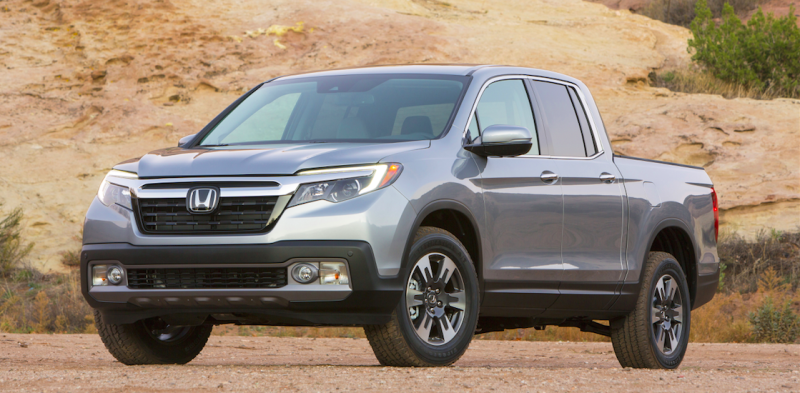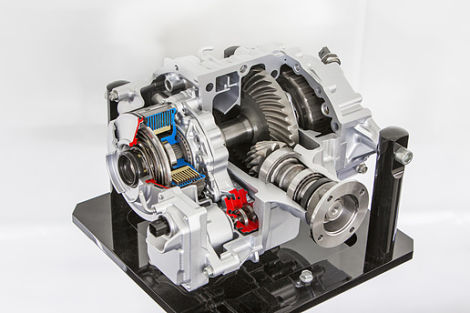The new Honda Ridgeline. Love it or hate it. Me personally? I like it and I agree with David that its actually a good fit for many truck buyers, especially the ones with enough self confidence to admit to themselves they don’t need to be seen as lumbersexual who slays giants with pelvic lasers axes in order to get some real work done. Trouble is, its not a truck...or at least not in the traditional sense...and that leads to a lot of confusion regarding what it is, where it comes from and how it works. Honda is pretty much worthless for providing these answers so I went looking for myself and now I’m back to report on my findings.

Being a new truck I can’t tell you all you want to know about it but I can give you a few details and hopefully silence the typical dumpus comments this kind of truck invites. I Should say that I’m not here to defend the truck, or detract from it, just to lay it down as best I know.
1. Its a minivan!
Yeah, its got shared component architecture with the odyssey platform. So. no really...what of it? I share genetic components of my mother, but my mother I am not. Its not meant to be HD but it has more payload than some FS trucks. Its going to be a fine platform for its intended uses.
2. FWD?!
Yup, its transverse engine just like the pilot and the truth is that really only has one downside: No easily adapted transfer case. And no, the Ridgeline doesn’t have one, its either FWD only...Which will be fine for anyone who needs a 2wd truck...or i-VTM4 which is single speed semi-full time AWD (more on that in a minute) and as such its not going to be well suited to off-road pursuits were low range is required. That’s fine, there are better trucks for this task anyway.
3. i-VTM4

What it is? How does it work? Torque vectoring? Yeah. This one is trickier. If you aren’t intimately familiar with how AWD/4WD works you should read this and this first. Okay now onto VTM4 and i-VTM4. Lets just make this clear right now, these are [more or less] just different names for SH-AWD but tuned differently. Here is an overly simplified rundown on how these systems work
- The VTM4/SH AWD unit is a single piece unit that replaces both the center differential and rear differential.
- It has a ring and pinion that is physically connected to the half shafts only by clutches
- Those clutches open and close to deal with speed bias AND torque bias for both the rear wheels individually AND the rear axle as a whole. Basically if you want more rear axle torque you lock up the 2 clutch packs progressively either using electromagnets and ball ramps (VTM4) or with hydraulic pressure (i-VTM4). If you want more torque to a single rear wheel you lock up that wheels clutch pack more. Simple, effective.
- i-VTM has torque vectoring on the rear axle. The VTM [SH-AWD] unit in addition to separate clutch packs for each half shafts has small planetary gear set on each half shaft with a tiny overdrive ratio of 1.027:1 (up from 1.016:1 in previous generations). The advantage of this system is that it allows for individual half shaft output speed to be greater than the input speed. If you apply this to a system that can engage or disengage a output shaft individually means you can introduce a yaw by over-speeding the outside wheel. Neat!
The advantage of this system is that it weighs very little (220 lbs) its very adaptable to many different vehicles and has low noise/vibration/harshness characteristics and is very easily tailored to meet a wide variety of performance targets. But its not without faults.
- Rear axle torque transmission limits from 10% - 70% engine torque. This means that the rear axle will never get 100% of the engine torque...though once at the rear the VTM4 unit can send 100% of the torque to either rear wheel. Compare that to a “true 4wd” system that is able to shift torque from 0-100%, though with the disadvantage of radius scrubbing on tight turns on high traction surfaces.
- VTM4 (
and I assume i-VTM4Nope, no button anymore) can “lock” the engagement of the clutches manually through a dash switch though its limited to only 70% torque to the rear axle (60% on VTM4) and not a full lock as is implied [as in true 4wd systems] and its only able to do this (VTM4 system and i-VTM4 presumably similar) at speeds up to 6mph, and in 1st, 2nd and reverse gears. The lock function gradually ramps out to a low lock state by 18 mph, but it will re-lock as speeds come back into the speed zones as defined by the map. - The clutches are 100% responsible for bias (both axle torque/speed as well as rear wheel torque/speed) and they are required to constantly slip in normal driving due to the overdrive gear sets. This creates heat that needs to be mitigated with fluids and pumps and it also means constant clutch wear, which may be an issue in the long haul if you abuse the system.
Does this mean the Ridgeline/Pilot/MDX are not true off-roaders? Yes it does. Does it mean they can’t go off-road? No it does not.
The truth is that this isn’t a “truck” in the way we are used to, and that’s okay in my opinion. This is a new (or at least remake) class of vehicle that is capable enough to meet the needs of a vast majority of the market, but doesn’t have the penalties that come with meeting the needs of the smaller part of the market that genuinely needs the additional capability.
There are still lots of questions that needs answering, such as price and mileage, but the real question that I think this raises more than any other is up to you to answer:
Are you secure enough in who you are to admit you really only need a Ridgeline? I hope so.